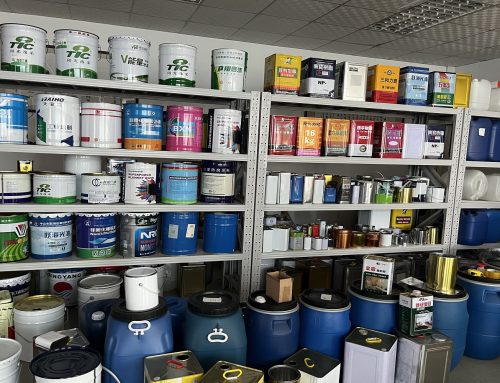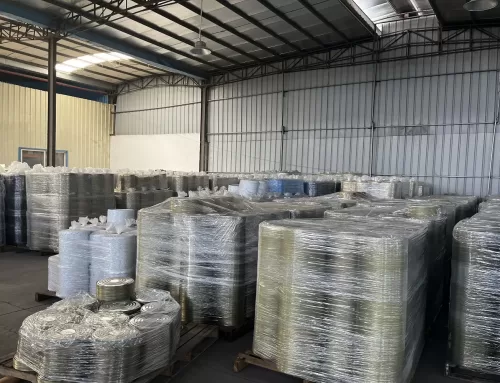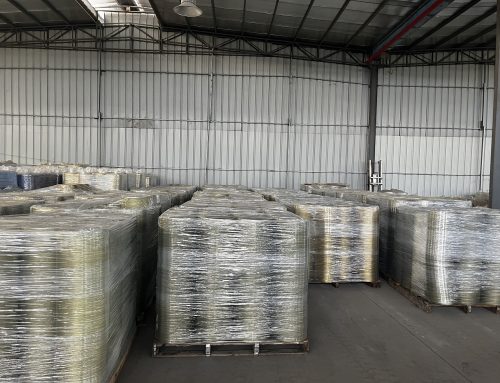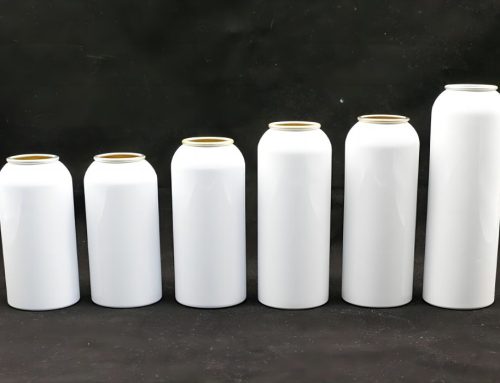(1)how tin cans are made?
①Three-piece empty can, manufacturing process flow and characteristics
a.The manufacturing process and characteristics of resistance welding and laser welding empty cans are as follows:
cutting → (scribing) → rolling → tack welding → internal and external coating → drying → (cutting), (beading), (necking),(expanding), (embossing) → flanging →seaming→ Leak detecting → (Full internal spray) → (Drying) → Stacking and packaging
The bracketed parts in the above steps can be configured according to the needs of the can type.
Characteristics of resistance welding process: seam welding of the can body does not require brazing, which fundamentally eliminates the pollution to the food in the solder and saves the solder; the strength of the weld is high and the seal of the weld is good; the weld overlap is small (0.25 -0.8mm), saving raw materials, narrow welding seam, especially after adding gas protection at the welding seam, the appearance is more beautiful; the thickness of the welding seam is similar to the thickness of the can body plate, which is about 1.3 to 1.5 times and convenient for flanging, necking, Sealing; high sealing quality, good air tightness of the can; fast production speed, up to 1000 cans / min.
- Tin can manufacturing process and characteristics
Cutting → Chamfering → End folding → rolling → Apply welding flux → Hooking → planishing → Brazing → Flanging → bottom seaming → Inspection → Packing
The chamfering is to cut off the two corners of one end of the can body blank, and cut two obtuse angles at the other end, so that when the can body is hooked to form a longitudinal seam, the two ends of the can body are longitudinally cut.
There are only two layers of iron sheet overlapped at the place to facilitate flanging and sealing, and at the same time help the solder to penetrate into the joints in the can.
Due to the problem of lead pollution, this process has been basically eliminated as a food can. This article will not focus on it.
- Adhesive canmanufacturing process and characteristics Adhesive canbody is bonded with polymer (such as polyethylene, nylon, etc.), and heated to 130 ° C-150 ° C, apply the adhesive in the molten state to the lap joint of the can body, and then heat, pressurize, and cool to make the joints tightly adhered.
Its process flow is
Cutting → chamfering→ end folding → rolling → coated with adhesive → lap or hooking → planishing → flanging → bottom seaming → inspection → packaging
Its process features are: saving solder, eliminating lead pollution to food, not using solder potions, and not damaging tinplate;
With chrome-plated plate, the cost of raw materials is low; it can be printed on the whole board without leaving blank welding seams, and its appearance is beautiful; the hot-melt adhesive has a low melting point, low energy consumption, and low operating costs; the heat and water resistance of the bonding can are poor. It is mainly used for packaging of solid or powdery contents.
② Two-piece can manufacturing process and characteristics
- Shallow deep drawing canprocess is:
Blanking → Deep drawing → Bottom forming → Flanging → Trimming
Shallow deep-drawn cans are often used for food canning, and are mostly made of tinplate.Because the height-to-diameter ratio (ratio of can height to can diameter) of the draw is less than 1, It can be formed only in one deep drawing. Coating and iron printing can be performed before drawing. Special deformation printing is required. Through the deformation analysis of the metal sheet in the process of drawing metal packaging items and container technical standard application manuals, the deformation printing pattern is drawn with a computer. After drawing, the graphics return to normal. The yellowing and iron printing before drawing can be subjected to deformation, friction and other processes during drawing. The subsequent process of the two-piece can after drawing and trimming is exactly the same as that of the three-piece can, and the equipment can be used universally.
Blanking and pre-drawing → drawing (or multiple drawing), bottom forming and flanging → trimming
b.Deep drawing can (DRD can) process flow is:
Deep-drawn cans are also commonly used in food cans. Low-carbon steel plate tinplate is used. The height-to-diameter ratio of the deep-drawn can is greater than 1. Often, two or more deep-drawn can be used to form. It is impossible for any kind of coating or printing to withstand the high diameter such as this large drawing deformation, so the deep drawing and the thinning drawing described below use full internal spraying and can body printing after drawing.
Coil unwinding → lubricant application → feeding and pre-drawing → drawing→ thinning and drawing several times → bottom forming → trimming → cleaning .
- The process of thinning and drawing can(D can) is
Drying → outer coating → drying→ surface printing → drying on the bottom cover varnish → inner wall coating → drying → necking and flanging →
Thinned and deep-drawn cans are often used for carbonated or nitrogen-filled beverage cans with gas.Aluminum or low-carbon steel plates (tinplate, TULC plates, etc.) are used.
Leak Detection → Stacked Packaging. The aspect ratio of the drawing is greater than 1. The difference with deep-drawn cans is that the wall thickness of deep-drawn cans is thick and uniform, while the material of the bottom and the mouth of the thin-drawn cans is thicker, but the thickness of the wall is as thin as 0.14mm (aluminum plate) or 0.1mm (steel plate). In order to meet the needs of the production of large-scale beverages, the equipment for thinning and drawing tank manufacturing is highly automated and the production speed is very fast. The drawing mold is very different from the previous two two-piece can manufacturing molds, so the equipment is also huge and complicated. This type of equipment and molds cannot be produced in China, and will not be discussed in detail here.
Please visit :www.canmakingmachine.net for the price of can making equipment.
(2) Equipment classification of can production line
① Three-piece can production line equipment classification Three-piece can production line manufacturing equipment is divided into cutting board equipment, forming welding equipment, and recoating equipment.
Dry equipment, rolling equipment, slitting equipment, necking equipment, bulging, embossing equipment, flanging equipment, cap making equipment, can sealing equipment, leak detection equipment, full internal spray equipment, drying equipment, stacking Equipment, packing or packing, etc.
② Two-piece can production line equipment classification Two-piece can production line equipment is mainly divided into: uncoiling equipment, cutting board equipment, stamping equipment, printing equipment, full internal spray equipment, flanging and necking equipment stacking operation and packing equipment.

how tin cans are made? What canning equipment is included? How much is the can making equipment?




